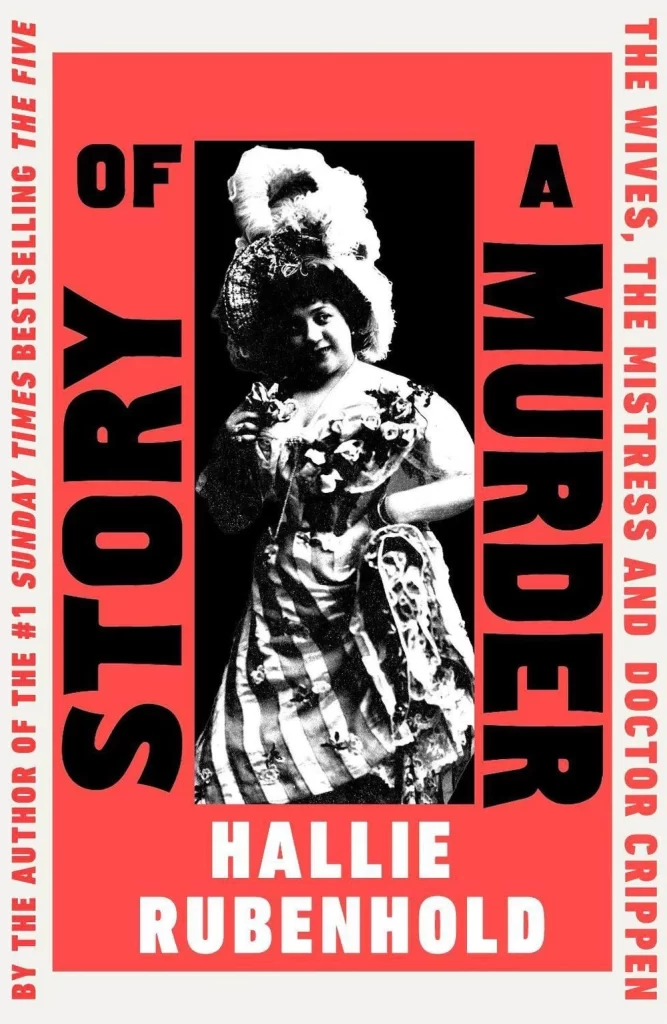Liverpool Sound and Vision Rating 9/10

Ms. Rubenhold’s dedication and calm pursuit of restoring justice to a victim’s name, of insisting with righteous vigour that to which had been stolen by the actions of a murderer, is in itself one of admiration that the reader cannot deny; add to that the strength of character it takes to almost singlehanded tackle what can be seen as a male myopic viewpoint in the characterisation of history’s most foul and heinous crimes is one that deserves every ounce of recognition that the follower of history can muster.
If the exceptional unearthing of fact and revelation in The Five: The Untold Lives of the Women Killed by Jack the Ripper was a fulfilling insightful account of those slaughtered by the Victorian Whitechapel murderer, then to tackle the crime of Hawley Harvey Crippen with the same attention to detail and Feminist view is a remarkable feat of social history; one to which restores the name of his victim to more than a fact quoted, and to which gives greater resonance to that of Ethel Le Neve, her part in the gruesome affair, and the questions that have surrounded her since the discovery of the remains of Cora Crippen in that dark, dank cellar in 1910.
If the Victorian era can be looked at now as one immersed in rank hypocrisy and the distaste of the effects of empire, then the Britain of the Edwardian period in which harboured the machinations of swindlers, fakes, fraudulent cheats and conmen galore was awash with people just like Crippen, men for the most part who were proven liars but who found they could utilise one particular skill in which to acquire wealth, confidence.
Hallie Rubenhold’s Story Of A Murder: The Wives, The Mistress and Dr. Crippen is one of fierce criticism of the age, and which damns the press of the time, and those that sought to offer their expertise and closeness to the case, as being in thrall to the man described as meek, a ‘good man’ and to the same shameful standards of seeing murder as a way to improve newspaper circulation; it also though unveils a kind of truth between the murder of Cora Crippen, and possibly that of the Doctor’s first wife who mysteriously passed away suddenly as was considered a young age, and that which was to be the passing commentary of the canonical five, and others, who died over two decades earlier.
The difference being arguably of those that mourned the dead was that of class, standing, and wealth. The five murdered in Whitechapel, Mary Ann Nichols, Annie Chapman, Elizabeth Stride, Catherine Eddows, Mary Kelly, and possibly an earlier victim in Martha Tabrum, were surely liked, and well known, especially the vivacious and spirited Ms. Kelly, but those who mourned their deaths were not in a social position to question the narrative, unlike Cora Crippen whose standing was almost immersed into society thanks to her friendships within the music hall society and her presence within the charity that she believed in, but the friendships to which were also connected; a right denied to many outside of the circles afforded when it comes to influence.
The right to have your own narrative, even in death is one we must uphold with upmost vigour. A murderer, as Ms. Rubenhold asserts, should not have the satisfaction of having their blackened name spreading their evil in the wake of their punishment. Cora Crippen did not deserve the infamy of not only being a murderer’s victim, but that of being a byword in history, a footnote for the academic to pause over briefly before dismissing entirely…or worse as Ms. Rubenfold discloses in the final part of this intriguing, fascinating, and detailed book, being the subject of hate from myopic and damning, agenda filled men.
A captivating, honest, and often brutal observation of one of history’s undervalued witnesses to history, the victim, the soul of Cora Crippen.
Ian D. Hall